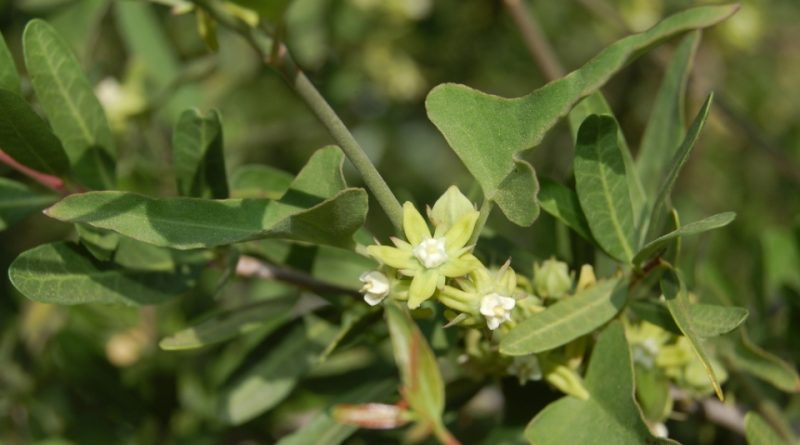Araujia brachystephana
Araujia brachystephana
The crowned araujia (Araujia brachystephana (Griseb.) Fontella & Goyder) is a climbing shrub species belonging to the Asclepiadaceae family.
Systematics –
From a systematic point of view it belongs to:
Eukaryota Domain,
Kingdom Plantae,
Magnoliophyta Division,
Magnoliopsida class,
Gentianales Order,
Asclepiadaceae family,
Asclepiadoideae subfamily,
Asclepiadeae tribe,
Genus Araujia,
A. brachystephana species.
The term is synonymous:
– Morrenia brachystephana Griseb ..
Etymology –
The term Araujia of the genus was dedicated to António de Araújo de Azevedo, Conde de Barca (1752-1817), Portuguese politician and botanist.
The specific epithet brachystephana comes from the Greek βραχύς brachýs short, short and from στέφανος stéphanos corona: with briefly crowned organs.
Geographic Distribution and Habitat –
Araujia brachystephana is a plant native to an area that includes northern Argentina, Bolivia, Paraguay and Uruguay.
Its natural habitat is that of the humid forest and the dry forest of the Gran Chaco up to 1000 m. s.l.m ..
Description –
Araujia brachystephana is a climbing plant that can reach a height of 5-7 meters and which leaves a milky and foul-smelling exudate exuding from the points of injury.
The leaves are opposite, dark green, shiny and rather fleshy, almost triangular, with entire margins, about 10-12 centimeters long.
The twining stems bear many goblet-shaped scented bisexual flowers, about 2 centimeters in diameter, with five white petals. The flowers are usually pollinated by moths, butterflies and bees, but are capable of automatic self-pollination. The structure of the flower includes a series of wedge-shaped openings that occasionally and inadvertently trap the pollinator’s proboscis, leading to its death. The flowering period is from July to September in the northern hemisphere and from November to February in the southern hemisphere.
The pear-shaped fruits are large pods, about 8-10 centimeters long that contain numerous black seeds attached to silky hairs that allow them to be dispersed by the wind.
Cultivation –
Araujia brachystephana is a climbing plant that in the short span of a few years can completely cover the foliage of a tree, also removing nutrients. In some cases the trees they grow on can experience vegetative difficulties.
The plant is harvested in nature for various medicinal and food purposes even if, in this regard, there is little information about it.
From a pedological point of view, it prefers a good clayey soil but succeeds in any fertile soil and requires a sunny position.
The flowers have a very strong scent that attracts moths that fly at night in search of nectar, but the flowers are shaped to trap moths until morning.
Propagation can occur by seed which germinates in a period which is influenced by temperature.
The transplant must be carried out soon when the seedlings are already manageable.
The plant can also be propagated by mature wood cuttings of the current seasons, in the late autumn period.
Customs and Traditions –
Araujia brachystephana is a plant used by local natives for medicinal and food purposes.
This plant uses both the flowers and the roots and the latex that flows from the cutting or breaking points of the branches.
In this regard, there are few certain details.
Among other uses, a somewhat resistant fiber is obtained from the stems that can be used in the production of fabrics.
This fiber is used for various uses in the same way as other fiber-providing species.
Preparation Method –
Araujia brachystephana belongs to one of those plants linked to the use and local tradition of the natives of the areas where it grows.
Some reports indicate that flowers, roots and latex are used of this plant, even if little is known about this.
Guido Bissanti
Sources
– Acta Plantarum – Flora of the Italian Regions.
– Wikipedia, the free encyclopedia.
– Useful Tropical Plants Database.
– Conti F., Abbate G., Alessandrini A., Blasi C. (ed.), 2005. An annotated checklist of the Italian vascular flora, Palombi Editore.
– Pignatti S., 1982. Flora of Italy, Edagricole, Bologna.
– Treben M., 2000. Health from the Lord’s Pharmacy, Advice and experiences with medicinal herbs, Ennsthaler Editore.
Warning: Pharmaceutical applications and alimurgical uses are indicated for informational purposes only, they do not represent in any way a medical prescription; therefore no responsibility is taken for their use for curative, aesthetic or food purposes.


